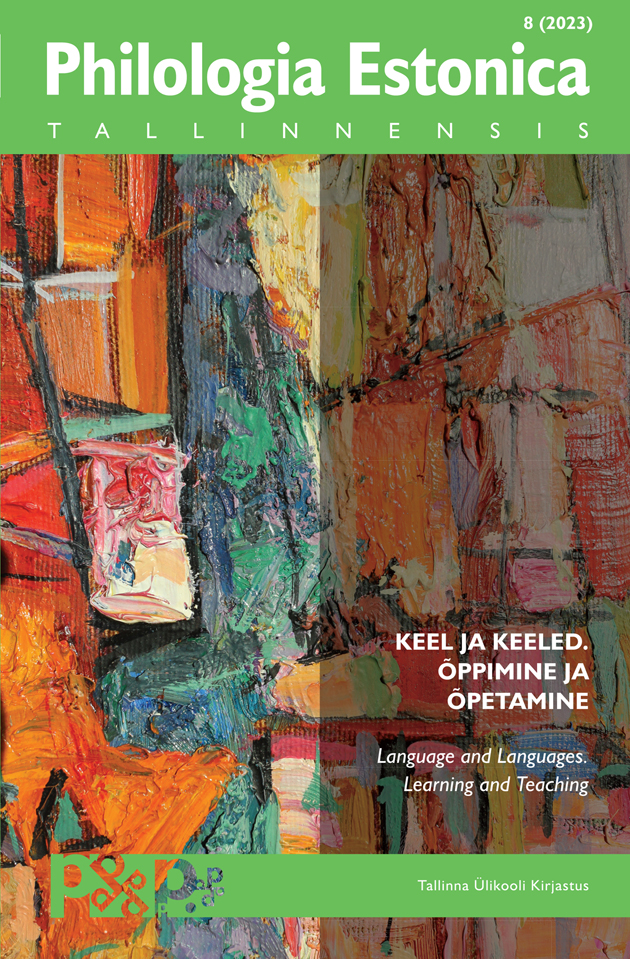KUIDAS ÕPPIDA EESTI KEELES RÄÄKIMA? RÄÄKIMISOSKUST ARENDAVAD ÜLESANDED EESTI KEELE KUI TEISE KEELE B1-TASEME TÄISKASVANUTE ÕPIKUTES
HOW TO LEARN TO SPEAK ESTONIAN? SPEAKING TASKS IN B1-LEVEL TEXTBOOKS OF ESTONIAN AS A SECOND LANGUAGE FOR ADULTS
Author(s): Mare KitsnikSubject(s): Foreign languages learning, Language acquisition, Finno-Ugrian studies, Adult Education
Published by: Tallinna Ülikooli Kirjastus
Keywords: teaching a second language; development of speaking skills; tasks with an information gap; Estonian language;
Summary/Abstract: Second language learners consider speaking to be the most important indicator of language skills and want to develop it most (Hendra, Jones 2018). At the same time, many learners feel most insecure when it comes to speaking (Richards 2008, Renandya, Nguyen 2023). Teachers of Estonian as a foreign language maintain that speaking skills also cause difficulties for adult learners of the Estonian language (Kitsnik, Mikk 2021). Speaking skills develop most effectively when communicating in an authentic language environment (Doehler, Eskildsen 2022), but the development of speaking skills can and must be effectively supported in language classes as well. For this purpose, learners must receive ample natural, interesting and appropriate linguistic input (N. Ellis 2013; Eskildsen 2008), and in addition to the exercises that support the development of speaking skills, they must also complete speaking tasks which contain an information gap. Information gap tasks create a natural communication situation in which participants do not know what the other person will say to them next. Such tasks effectively develop courage to interact and linguistic fluency (R. Ellis, Shintani 2014; Prabhu 1987). The tasks should be completed in pairs and small groups, which will significantly increase the speaking volume of all learners and allow them to experiment more with the language and acquire it better (Adams 2018; Sato 2015). In teaching, the teacher is usually supported by study sets which contain a large number of different tasks and exercises (Tomlinson 2022). The article examines listening texts that provide linguistic input and activities that develop speaking skills in three popular B1-level learning sets of the Estonian language: “E nagu Eesti” (Pesti, Ahi 2015), “Tere taas!” Mangus, Simmul 2022) and “Naljaga …” (Kitsnik, Kingisepp 2021a), “…pooleks” (Kitsnik, Kingisepp 2021b). In all the study sets, the listening texts are audio texts mostly created for the study set and read by actors. In the set “Tere taas!” there are also many sentences in Russian with Estonian translations. There are no listening tasks in the “E nagu Eesti” set, other sets include listening tasks with the listening texts. All study sets contain exercises that support grammar, vocabulary and speaking skills, as well as speaking tasks that develop the fulfilment of communication goals. In the sets “Tere taas!” and “Naljaga pooleks”, there are speaking tasks for creating dialogues with an informationgap. All sets also include some narrative tasks: retelling reading texts, telling about events in your life or creating fantasy stories, and questionanswer tasks, which sometimes include a short discussion. Some of these tasks have been made more interesting with active learning techniques and gamified elements. In summary, the present study is a first attempt to look at the speaking tasks of Estonian B1 learning sets. In future, it would be necessary to study the content of the speaking tasks in more detail: to look at which topics and which language functions that the tasks concern; whether the tasks develop complexity, accuracy or fluency; whether the tasks belong to a larger cycle of tasks and exercises, how engaging and appropriate the tasks are for learners, etc. It would also be very useful to study how actively tasks are carried out in language classes and how effective they are in developing students’ speaking skills and speaking motivation.
Journal: Philologia Estonica Tallinnensis
- Issue Year: 8/2023
- Issue No: 1
- Page Range: 201-225
- Page Count: 23
- Language: Estonian

